Hyrule, Dynasty, Samurai and Dragon Quest: the Warriors are coming west
Omega Force seems to be responsible for about 40% of the games coming out of Japan at the moment. We chat with the mega-developer about its growing visibility in the west.
Omega Force is best known for Dynasty Warriors and its spin-offs, Samurai Warriors and Warriors Orochi. There's a tendency to write off these games in comment sections, despite their continued strong sales in all territories, so Omega Force itself is often overlooked.
Recently, though, the Tecmo Koei studio has been attracting more and more attention. It was behind Hyrule Warriors, the well-received Legend of Zelda spin-off that just might reignite mainstream western interest in the Warriors formula. It's about to do the same for Dragon Quest with Dragon Quest: Heroes, and its entry in the increasingly crowded portable hunter genre, Toukiden: Age of Demons, went over pretty well.
For several years now we've heard a lot of doom and gloom out of Japan, with publishers like Capcom chasing international audiences first and foremost. At Tokyo Game Show 2014 I was offered a chance to chat with Hisashi Koinuma, vice president of Tecmo Koei and Gust and one of Omega Force's leading lights, and the first thing I wanted to know was if the developer is intentionally targeting western markets, leading to a spike in its visibility beyond Japan.
The answer, it turns out, is no.
"Our obvious focus is the Japanese market. Omega Force makes games based on the Japanese market, and research into it," Koinuma said.
"Having said that, we do have collaborations like Hyrule Warriors, which is based on The Legend of Zelda on this occasion, and maybe that's why we've shifted more towards the western market in a sense. On the other hand we have Bladestorm coming out, and again that's more friendly towards the overseas markets.
"But our focus is to start with the Japanese market, and then maybe expand outwards to international markets."
"The core concept of most of our games is 'one against 1,000'. The crucial aspect of the graphics is to visualise the many armies you need to fight against. So we need to compromise on the graphics, maybe with the backgrounds and arena."
This is such a different approach from many major Japanese publishers and developers over the past generation, but despite all the negativity over the Japanese market, it's really working: Omega Force is a huge, and hugely successful, team.
"I don't know how many people are involved in projects at Omega Force at the moment, but talking about the planners programmers alone, there are about 200 people, or maybe 300 at peak," Koinuma told me.
That figure doesn't include the graphics and sound teams; if you include all the development staff, Koinuma estimates that around 1,000 people are involved in Omega Force games when the studio is in peak production. That's more than the estimated 600 who worked on Assassin's Creed 3, which was developed across multiple studios, and is pretty startling when you consider that Ubisoft Montreal - one of if not the biggest developer in the world - employed about 2,500 people during the Assassin's Creed 3, Watch Dogs and Far Cry 3 era, including non-development staff. You can imagine how much money the Warriors games and other Omega Force projects must be generating.
With such resources at its disposal, Omega Force is well positioned to push for greater international success, but there's at least one major barrier to the Warriors games going global on a bigger scale: graphics. I love those games, I really do, but I swear that apart from reducing pop-up, getting rid of distance fogging and improving character models a little, the latest entires for PS4 and Xbox One look much the same as the PS2 releases I first fell in love with. You can't tell me those aren't the same assets; I've smashed that exact same vase tens of thousands of times.
Koinuma's response to my criticism was along the lines of "it's a fair cop, guv", but he stressed Omega Force's approach to the Warriors series doesn't leave much room for the kinds of showy graphics less ambitious action games can manage.
"As you know the core concept of most of our games is 'one against 1,000'. The crucial aspect of the graphics is to visualise the many armies you need to fight against.
"That's the official policy, so we need to compromise on the graphics, maybe with the backgrounds and arena.
"Having said that, the collaborative titles we're working on - like Hyrule Warriors and Dragon Quest: Heroes - are more focused on individual characters rather than one against 1,000. So we're hoping to focus more on graphics, and meet players expectations.
"At the same time, the graphic capabilities of the hardware is improving. So from the hardware side, we expect to find it easier to balance the needs of displaying so many enemies on screen at once versus improving the backgrounds and other graphics."
Koinuma has a background in programming, and the programming team is the heart of Omega Force. Within this group is a dedicated middleware team, who work on creating engines when new hardware is released, as well as constantly building new versions between hardware launches.
"We don't use the same engine for each game; we adapt on every occasion," Koinuma said.
Omega Force's latest release is Samurai Warriors 4, which arrives in the West this month on PlayStation 3, PS4 and Vita. The PS3 and Vita versions have been available in Japan since March, whereas the PS4 version was released in early September. This is a pretty short wait for a localisation, especially for a game developed primarily for the Japanese market, but by the time of my interview with Koinuma promotion for Samurai Warriors 4 had melted away.
I haven't seen much promotion of it in the west, either, even though I personally am quite excited for it. The last Samurai Warriors game only released on Wii in the west, and as I didn't have one, I missed out. Koinuma said there's no reason not to jump back in.
"With a long-running franchise, it’s difficult to make drastic changes to the systems. We do take a cautious approach, so as not to upset core fans."
"It's going to be good fun. There's no negative side to missing the previous one," he said.
"The approach we took with the latest instalment is to introduce the overall history as a whole, rather than focus on individual characters. So even if you missed the previous game, we feel you won't miss out in terms of the characters' back story.
"We went back to the drawing board on this one in terms of how we tell the story."
The Warriors game constantly reinvent themselves - no, really, they do - but Samurai Warriors 4 took more dramatic steps than previous evolutions. I asked Koinuma whether it was time to apply this strategy to Dynasty Warriors, Tecmo Koei's perennial cash cow.
"When we start a new game, we don't have a set approach or formula," Koinuma said.
"It all depends on market research. We can't say for sure whether the story system of Samurai Warriors 4 will be used for Dynasty Warriors. It'll definitely be considered."
"Does Koinuma-san feel Dynasty warriors need a makeover?" I asked.
The executive paused.
"With a long-running franchise, it's difficult to make drastic changes to the systems," he said.
"Having said that, we always need to look into something new, to surprise core fans, so they want to come back and play the next one. Changes are required for all games, and that applies to Dynasty Warriors as well.
"So the answer to your question is yes. We do take a cautious approach, so as not to upset core fans. But we're looking into it, and hopefully we'll get the right balance."
Instead of Samurai Warriors 4, Tecmo Koei's TGS 2014 booth was dominated by the new Dynasty Warriors Empires game, and Samurai Warriors Chronicles 3. This latter series is a portable spin-off combining the best elements of the core Samurai Warriors series and its Empires spin-off, and it's top of every western Omega Force fan's wish list.
"Everyone keeps asking that," Koinuma exclaimed when I asked after the much-requested localisation.
"We're hearing a lot from westerners about whether it's going to be available. We feel that's partly because we didn't release Samurai Warriors Chronicles 2 [in the west].
"But this time we're working on 3DS and Vita, so we feel there's more opportunity market wise for us to bring it west. Hopefully we'll have something to announce soon, but in the meantime, fans, please, let us know that there's demand for it, so we can convince [management] to bring it out."
Demand is the driving force behind Omega Force's cautious western expansion - demand for the games it makes for Japanese players, not management demands to appeal to western tastes. It's a simple strategy, but it's working.





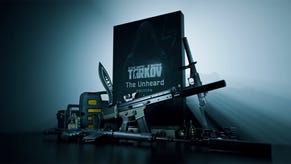

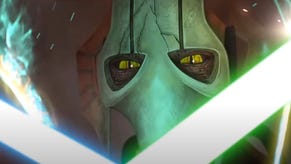
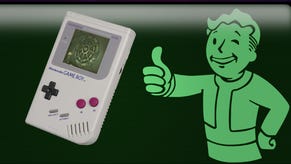
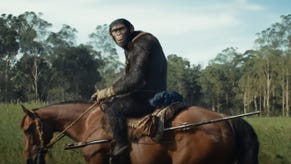

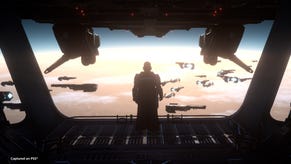
.png?width=291&height=164&fit=crop&quality=80&format=jpg&auto=webp)